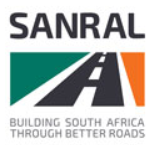SANRAL to participate in annual Transportation Research Board meeting
A South African National Roads Agency (SANRAL) delegation will participate in a high-level meeting of the Transportation Research Board in Washington DC this week.
This annual meeting, which usually covers a wide range of topics on transportation modes, attracts more than 12 000 delegates and 5 000 presentations, with nearly 800 sessions from key players in the transport industry, who include policymakers, administrators, researchers, practitioners as well as representatives of government and academic institutions.
The SANRAL delegation, which will include SANRAL Chief Executive Officer Nazir Alli, and renowned incumbent of the SANRAL Chair at University of Stellenbosch's Civil Engineering Department, Professor Kim Jenkins, will showcase the transport agency's efforts and latest technological developments on pavement engineering.
"Through the new, innovative South African Pavement Design Method (SAPDM) developed by specialists in our roads industry as well as the South African Pavement Engineering Manual (SAPEM), which are our flagship initiatives aimed at best practice in designing pavements in South Africa, our delegation will present to the international community key initiatives that we have undertaken, such as the development of methodologies and solutions through pavement engineering for supporting the local economy, materials testing, quality and laboratory management, and the different methods used in the construction of pavements," says Professor Jenkins.
According to Jenkins, the Pavement Design Method has pushed research boundaries to incorporate relevant, advanced technologies that will provide robust and refined pavement structures that can incorporate innovative initiatives. In addition, the Engineering Manual, with its comprehensive 14 chapters, is a reference and best practice guide for all aspects of pavement engineering. It provides explanations of the basic concepts and terminology used in pavement engineering and provides background information to the concepts and theories commonly used in the industry. It stands to benefit the young practitioners as well as the more experienced engineers who seek to explore new technologies.
"The manual is a valuable education and training tool and is recommended reading for all entry-level engineers, technologists and technicians involved in the pavement engineering industry. It is the product of dedicated efforts and generosity of spirit of our practitioners and specialists in our industry," adds Alli.
SANRAL will also align itself with the conference's theme of Corridors to the Future: Transportation and Technology, by demonstrating how it has integrated technology as one of its core pillars into South Africa's roads system.
Through key technological innovation initiatives such as the Intelligent Transport System (ITS) for example, SANRAL continues to glean and analyse accurate and comprehensive incident data to highlight accident trends and high risk locations on Cape Town, Gauteng and KwaZulu Natal's highways.
